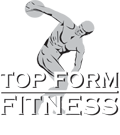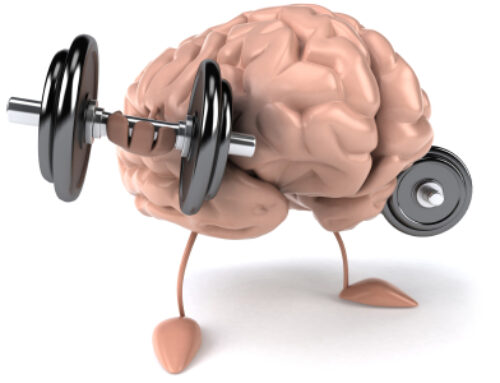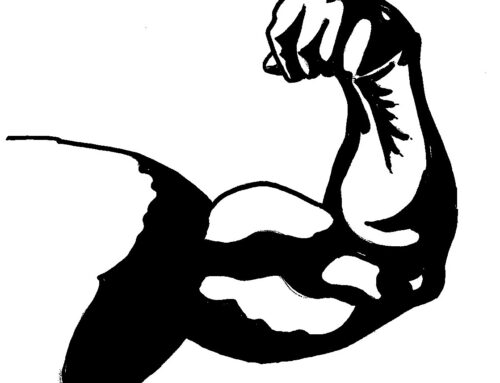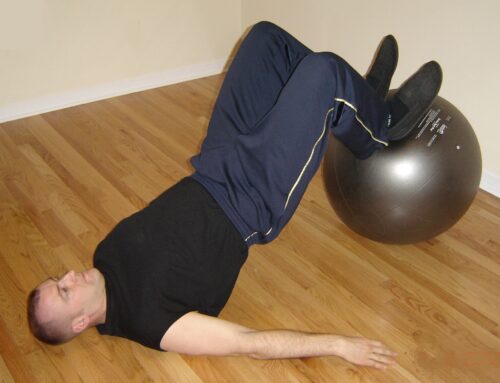In our modern society, rounded forward posture is becoming more and more common. It seems that the more advanced technology becomes, the more sedentary we as humans become. Whereas physical activity used to be a natural part of our lives, now we need to schedule time to go to the gym to stay in shape. Many people spend most of their days sitting at a desk, in front of a computer, in a car, on the bus, or in front of a TV. No wonder we appear to be de-evolving!
After spending so much time hunched over, the muscles in our mid-back between the shoulder blades tend to get weak and lengthened, while the muscles in the front of our body and around our neck become shortened and tight. This can lead to shoulder pain related to a/c joint impingement, tight upper traps, rotator cuff muscle imbalance, anterior delt irritation, and more. These problems are then aggravated by many common exercises such as chest press and overhead press. If you are suffering from shoulder pain as a result of an acute injury or strain, make sure get checked out by a medical professional and get assessed to rule out any serious soft tissue injury. Other than that, a very common cause of shoulder pain is poor posture, instability of your scapula, and a strength imbalance between the anterior and posterior muscles that support the shoulder joint. While massage and stretching might feel good and provide temporary relief, until you address these areas of weakness and restores muscular balance, the discomfort is likely to return. Thankfully there are several exercises you can do the help strengthen these key areas.
But before we even get into that, you need to pay attention to your posture! A forward head posture strains your upper back muscles and can eventually damage neck and upper back structures. Neck muscles can become weak and over time cervical (neck) discs will become pressured. If you pay attention to your own posture, you may be surprised to find that you do much of your standing, sitting, daily activity, and exercise with a forward head. No wonder you have pain. The pain and other problems of the forward head are sometimes referred to collectively as “Upper Crossed Syndrome.” But just because it’s called a “syndrome: doesn’t mean it’s a disease or structural problem you have to accept and live with. It is simply mechanical pain from poor slouching posture, and can be fixed. Here are some exercises you can start incorporating on a daily basis (or whenever you have time), as well as exercise progressions to follow to recover from shoulder injury or imbalance. I also suggest you use some of these movements as a warm up before your upper body workouts:
In addition to the exercises in this video, I also suggest including more “pulling” movements in your regular upper body workouts (ie: pulldowns and rows) as compared to pressing movements. This will encourage the postural muscles in your mid back to become stronger while reducing irritation to the anterior shoulder joint.
Other considerations include:
- Use ice or Advil for acute inflammation when needed. Alternatively, heat or warmth may also help for pain control.
- Include Omega 3 fats in your diet as they reduce inflammation.
- Perform isometric contractions for your weaker muscles to encourage muscle activation before training.
- Pay attention to your posture over the course of your day.
- Incorporate neck stability / mobility work ie: rotate side to side, side bend to each side, and chin tucks.
- Get plenty of rest.
- Always use proper form and avoid painful exercises, at least initially while you “rebuild” shoulder stability.
I hope that helps! I also have a blog post discussing How to Build a Stronger Neck which can help with shoulder pain as well. Until next time, keep training! Josh








Lifestyle has caused people to have health and bone problem.
… [Trackback]
[…] Read More: top-form-fitness.com/fitness-blog/how-to-fix-shoulders/ […]
Thank you, I’ve just been searching for info approximately this topic for a while and yours is the best I’ve found out till now.